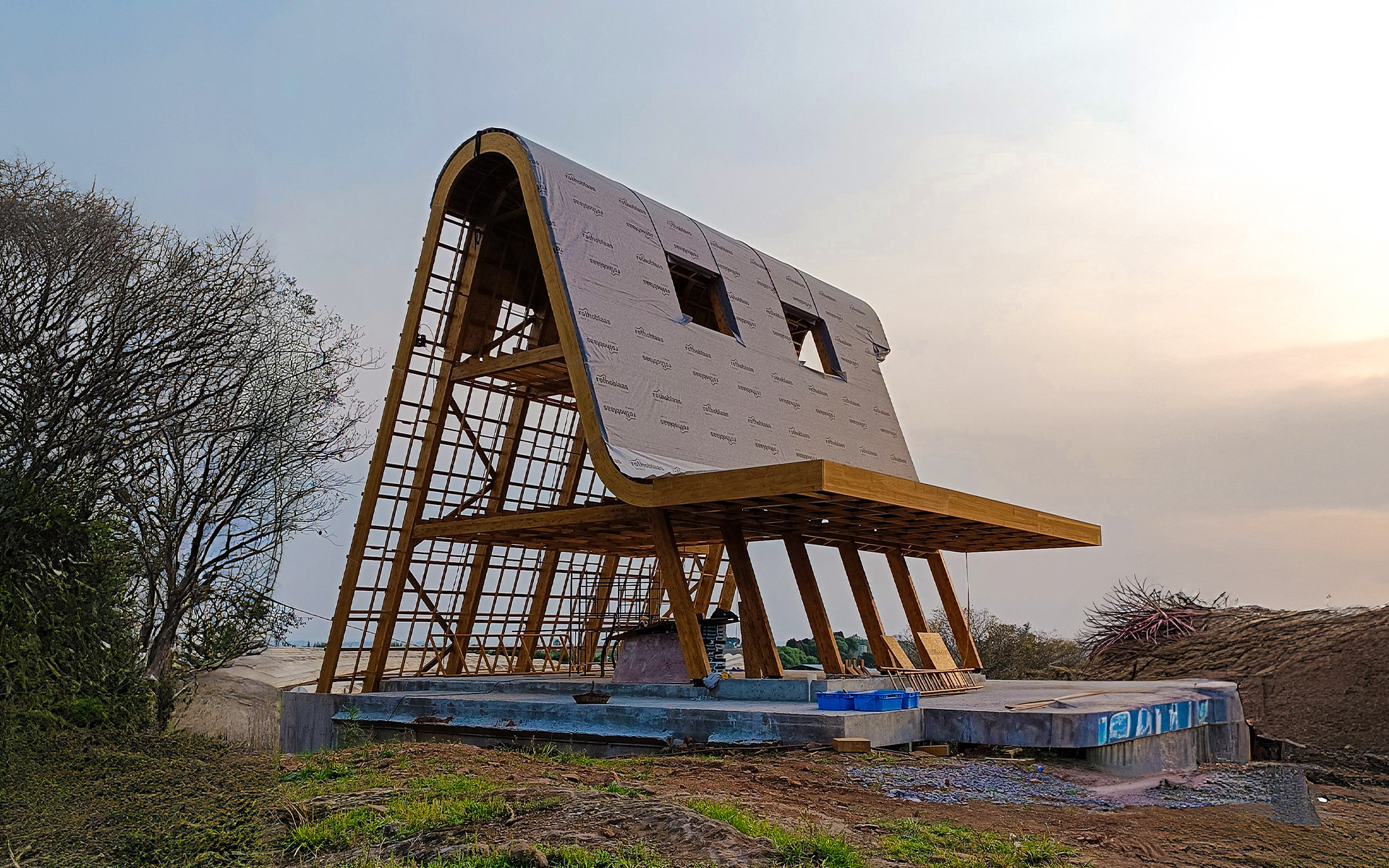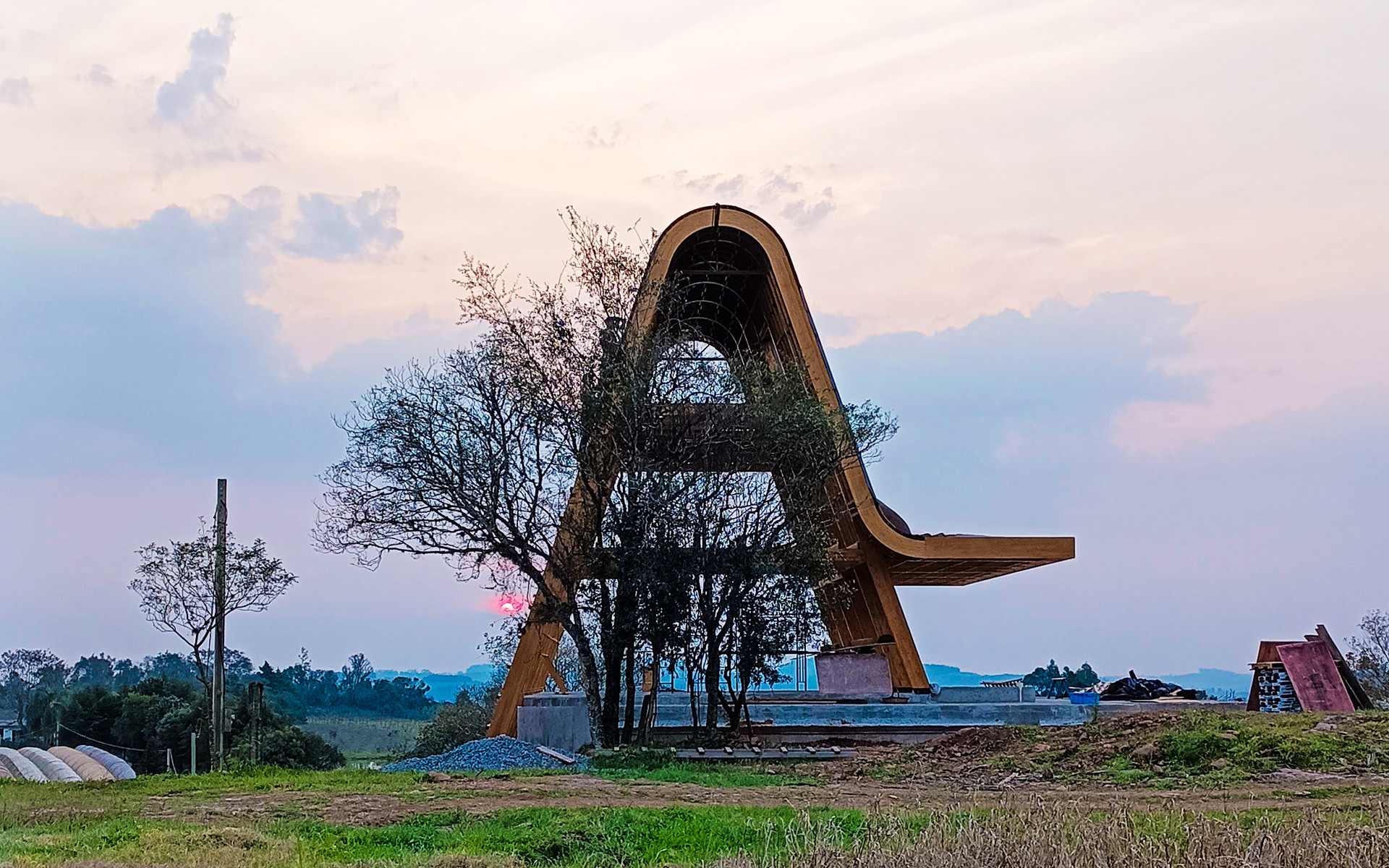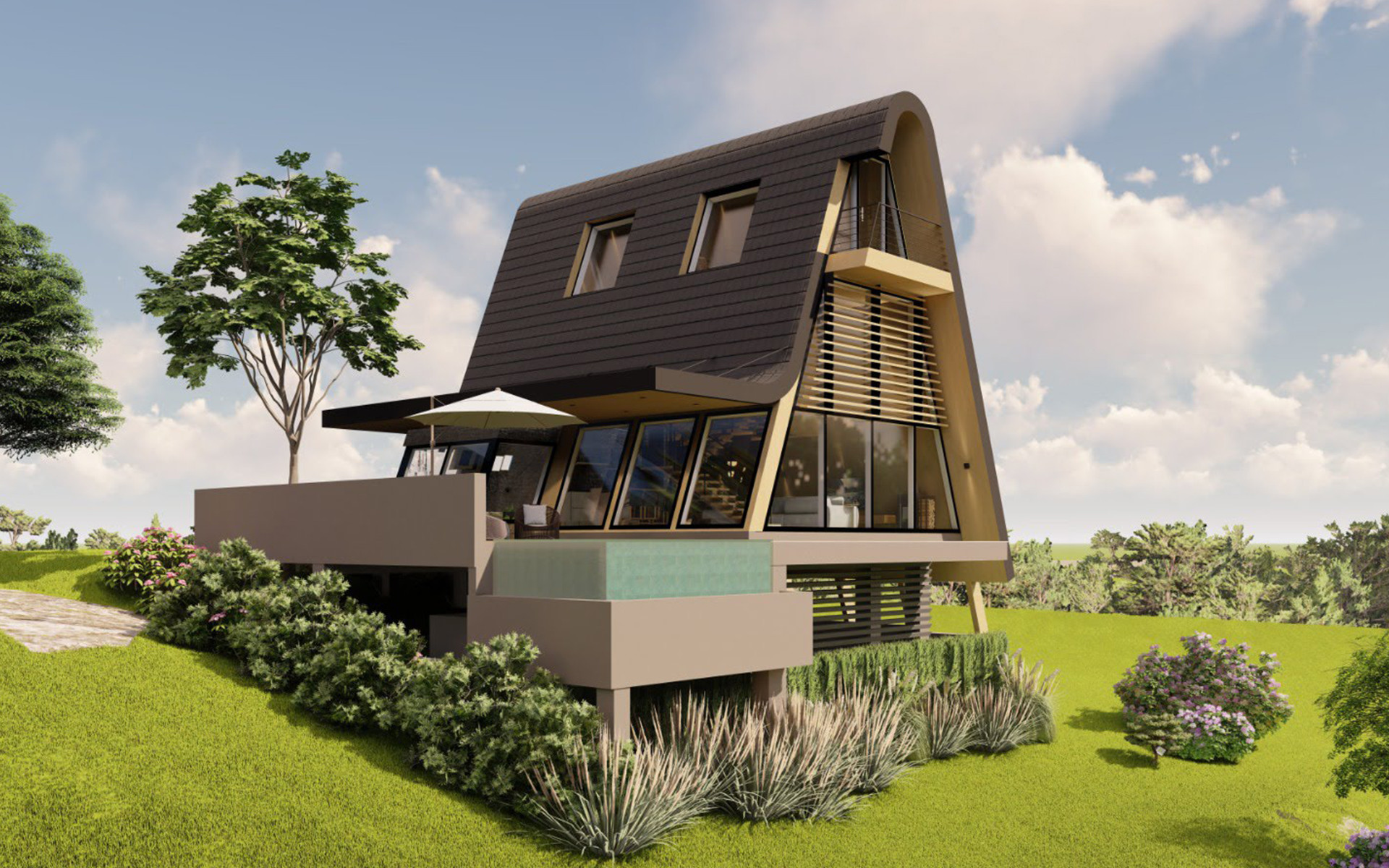
MOZZAFFIATO: A hybrid structure combining Glulam and steel
The Mozzaffiato project, located in Nova Pádua, Rio Grande do Sul, Brazil, is a very important and complex construction. This home, which combines a hybrid structure made of Glued Laminated Timber (Glulam) and steel, stands out for its use of cutting-edge techniques to produce and install the curved beams.
Designed by the Viva Nesta architectural firm and built by Casacom Madeira, this construction is set in a natural environment with very specific climate conditions, making moisture protection and vapour management crucial aspects in ensuring the structure’s long-term durability and optimal energy efficiency.

Glulam and steel: the technical challenges of Mozzaffiato
Glued Laminated Timber (Glulam) is renowned for its strength and structural versatility, especially in modern constructions that demand precision and the ability to support heavy loads. However, as highlighted by the Forest Products Laboratory, timber is extremely sensitive to moisture, particularly in environments with high rainfall, like Nova Pádua, which records over 1,600 mm of rain every year.
It follows, therefore, that the combined timber and steel in Mozzaffiato requires adequate protection to prevent degradation due to moisture ingress.

To meet this requirement, the TRASPIR 110 membrane by Rothoblaas was selected, a solution providing an effective barrier against external moisture while controlling the vapour flow, thus preventing condensation inside the walls and roof.
Studies conducted by NREL have in fact shown that using breathable membranes like TRASPIR 110 can reduce moisture-related damage by up to 40%, improving the durability and energy efficiency of timber structures, particularly in hot and humid environments.
Design choices to ensure durability and efficiency
One of the key aspects when building Mozzaffiato was moisture and vapour management, essential in preserving the integrity of the structure.
The TRASPIR 110 membrane selected by the designers allows the internal vapour to escape without compromising the integrity of the building envelope, insofar as designed to optimise wind tightness, thus limiting uncontrolled wind flows to protect against cold draughts in winter, or hot air in summer.
This type of protection is crucial in a climate like that of Rio Grande do Sul, where high humidity and high temperatures in the summer, as well as cold temperatures in the winter, can lead to condensation within the walls.

Membranes for airtightness and moisture control: how they contribute to energy savings.
Breathable membranes are designed to preserve the balance between external watertightness and internal breathability. In Mozzaffiato, this translates to improved living comfort and optimal energy efficiency thanks to the membranes’ ability to control moisture and prevent condensation.
Breathable membranes can also serve additional purposes, such as protecting the structure or timber façades against UV rays: TRASPIR EVO UV 115 is particularly effective in warm and humid climates, offering high-level watertightness and excellent protection against the sun and weathering, thanks to its special composition.
Membranes and climates: when the challenge is heat and moisture
In tropical climates, heavy rainfall and high humidity require high-performing membranes. These membranes must be able to withstand rainwater infiltration and handle large amounts of moisture. The use of water-resistant, variable diffusion and breathable membranes combined with good ventilation is essential in preventing problems with mould and ensuring a healthy indoor environment.
Products like TRASPIR WELD EVO 360 are perfectly suited for these environments. The fact that they can be welded allows for exceptional protection, ensuring continuous waterproofing for timber roofs.
Not just in summer: moisture poses a threat even in the cold
In cold climates, moisture management is essential in preventing problems with mould and the potential deterioration of structures. Reduced ventilation during the winter months can lead to excessive moisture inside buildings.
In this case, the best membranes are those designed to effectively control water vapour diffusion: they allow adequate breathability while preventing excessive moisture from infiltrating the walls. The use of vapour barriers and control membranes on the inside can help keep moisture under control.

The importance of choosing the right solutions for the right climate
The Mozzaffiato project highlights the importance of adopting solutions able to ensure the durability of buildings in specific climates.
Using the Rothoblaas configurator, architects and designers can select the most appropriate solutions to protect their projects, ensuring sustainable, lasting and comfortable buildings. Watch here: https://www.rothoblaas.com/climatic-filters
All rights reserved
Technical Details
- Year:
- 2024
- Companies:
- Viva Nesta, Casacom Madeira
- Country:
- Brazil
- Products:
- TRASPIR WELD EVO 360 TRASPIR EVO UV 115 TRASPIR 110 EASY BAND






